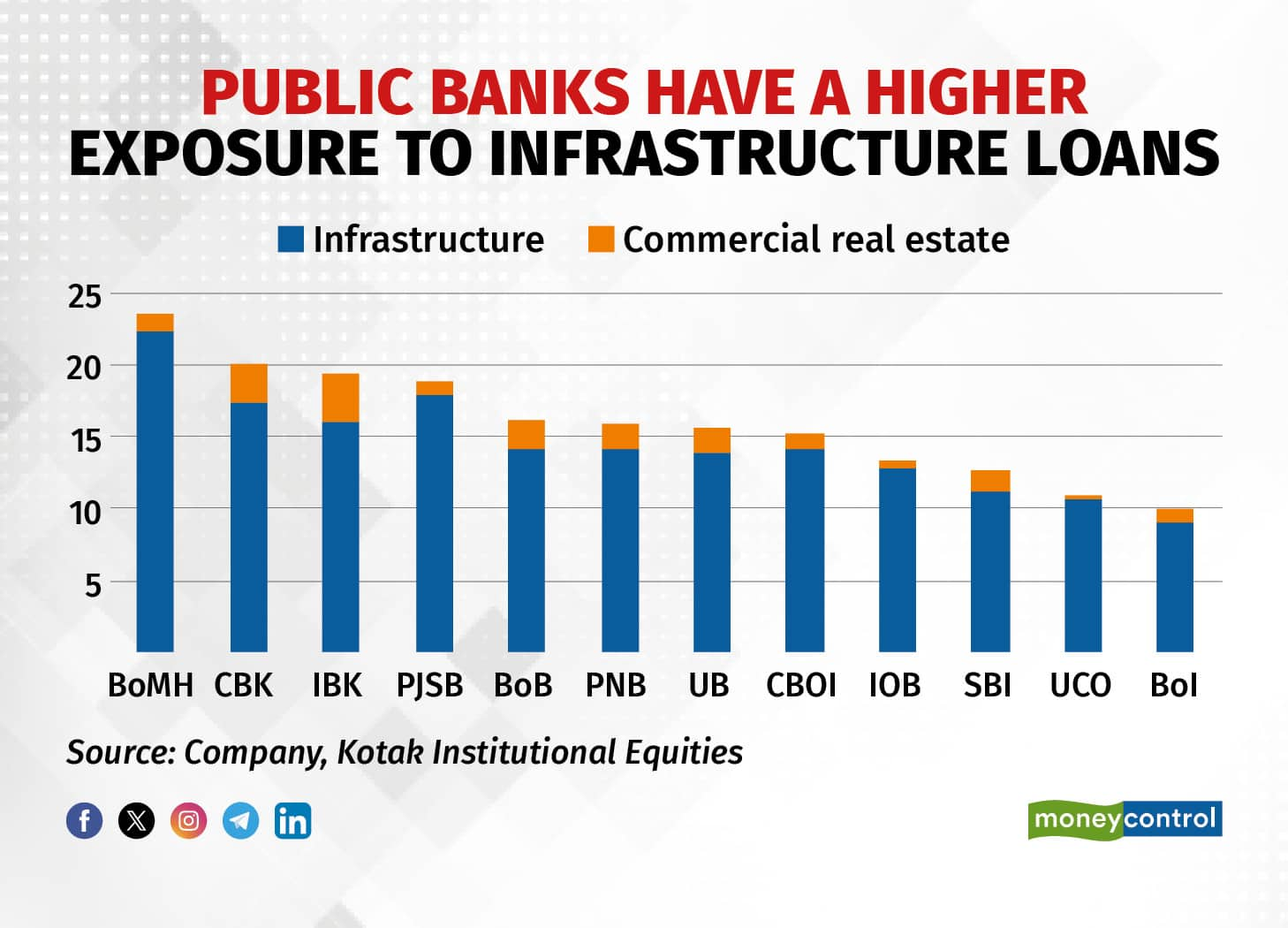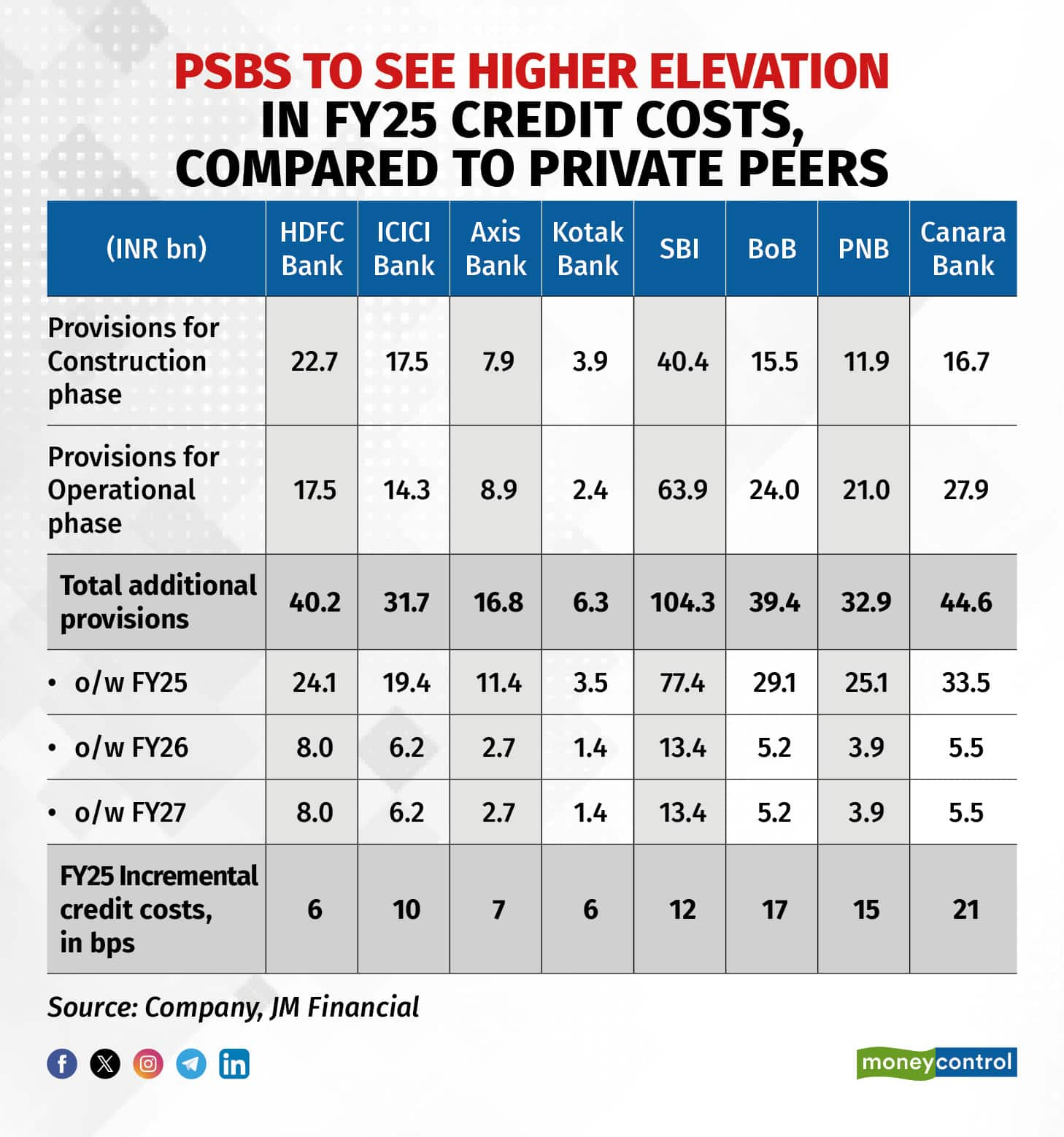



Share of PSU banks took a dive in trade on May 6, after the Reserve Bank of India (RBI) released a draft proposing tighter norms for lending and heightened monitoring for under-construction infrastructure projects.
On May 3, the RBI proposed that lenders should set aside higher provisions for all infrastructure projects that are under-construction, and also asked the lenders to ensure strict monitoring of any emerging stress.
At 11.45 am, the Nifty PSU Bank index plunged around 3.2 percent. The top laggards on the index were Punjab National Bank, Canara Bank, Bank of Baroda and Union Bank, all slumping over four percent.
NBFCs such as REC, Power Finance and IREDA also crashed up to 12 percent as they are they focus on financing power projects, which are a significant part of the infrastructure pie.
Also Read | RBI proposes tighter rules for project finance
Public-sector lenders are disproportionally impacted since public banks have a higher exposure to infrastructure loans.
The RBI note highlighted that the proposal was "taking into account the experience of banks with regard to financing of project loans."
Currently, India is seeing a boom in infrastructure and manufacturing projects, led by the central government's drive to boost the economy.
However, in the past, the domestic banking sector has faced large defaults on infrastructure loans, which pressured the banking system. RBI’s proposed guidelines are an attempt to prevent any such cases reoccurring, given the ongoing thrust on infrastructure spending.
What has the RBI proposed?When a project is in the construction phase, the RBI proposed that lenders set aside a provision of five percent of the loan amount. This will reduced to 2.5 percent once a project is operational.
The required provisions will further be cut to one percent once the project has adequate cash flow to repay current obligations.
The lenders are required to make the five percent provision in a phased manner: two percent in FY25, 3.5 percent in FY26 and five percent by FY27.
Currently, lenders are required to have a provision of 0.4 percent on project loans that are not overdue or stressed.
Also, banks should have clear visibility on the date on which a project is expected to begin commercial operations and increase provisions in case operations are delayed. Any delay over three years in beginning an infrastructure project should change the classification of the loan from standard to stressed.
Also Read | REC, PFC, IREDA shares fall up to 11% as RBI proposes tighter project finance rules
What will its impact be?A Kotak Institutional Equities report said "the memories of the last corporate cycle are quite fresh." This, in turn, has created fresh concerns around the guidelines. However, the report noted that infrastructure loans in the banking system are relatively small at 8 percent of all loans compared to over 15 percent in FY15.
Additionally, the mix of these loans has a higher share of operational loans rather than under construction loans. Besides, the promoters that worked through the last corporate cycle have stronger balance sheets, added the brokerage.
JM Financial said the move will lead to lower returns for lenders in project finance and reduce the incremental appetite for such exposures, if the guidelines are implemented in the current form.
It is a prudent move from the risk management perspective, but it could be detrimental to growth in the infrastructure sector as it is capital-intensive.
Public-sector banks to see increased pressureWhen compared to private lenders, public-sector banks will see a larger impact if the draft is implemented. In a report, Kotak Institutional Equities noted that public banks have a higher exposure to infrastructure loans and less to commercial real estate.

On the other hand, private banks take an exposure to the sector through financing operational assets, instead of funding projects under construction.

JM Financial predicted that if the guidelines are implemented, the incremental credit costs for public sector banks would increased in the range of 12-21 bps.
Disclaimer: The views and investment tips expressed by investment experts on Moneycontrol.com are their own and not those of the website or its management. Moneycontrol.com advises users to check with certified experts before taking any investment decisions.
Discover the latest Business News, Sensex, and Nifty updates. Obtain Personal Finance insights, tax queries, and expert opinions on Moneycontrol or download the Moneycontrol App to stay updated!
Find the best of Al News in one place, specially curated for you every weekend.
Stay on top of the latest tech trends and biggest startup news.